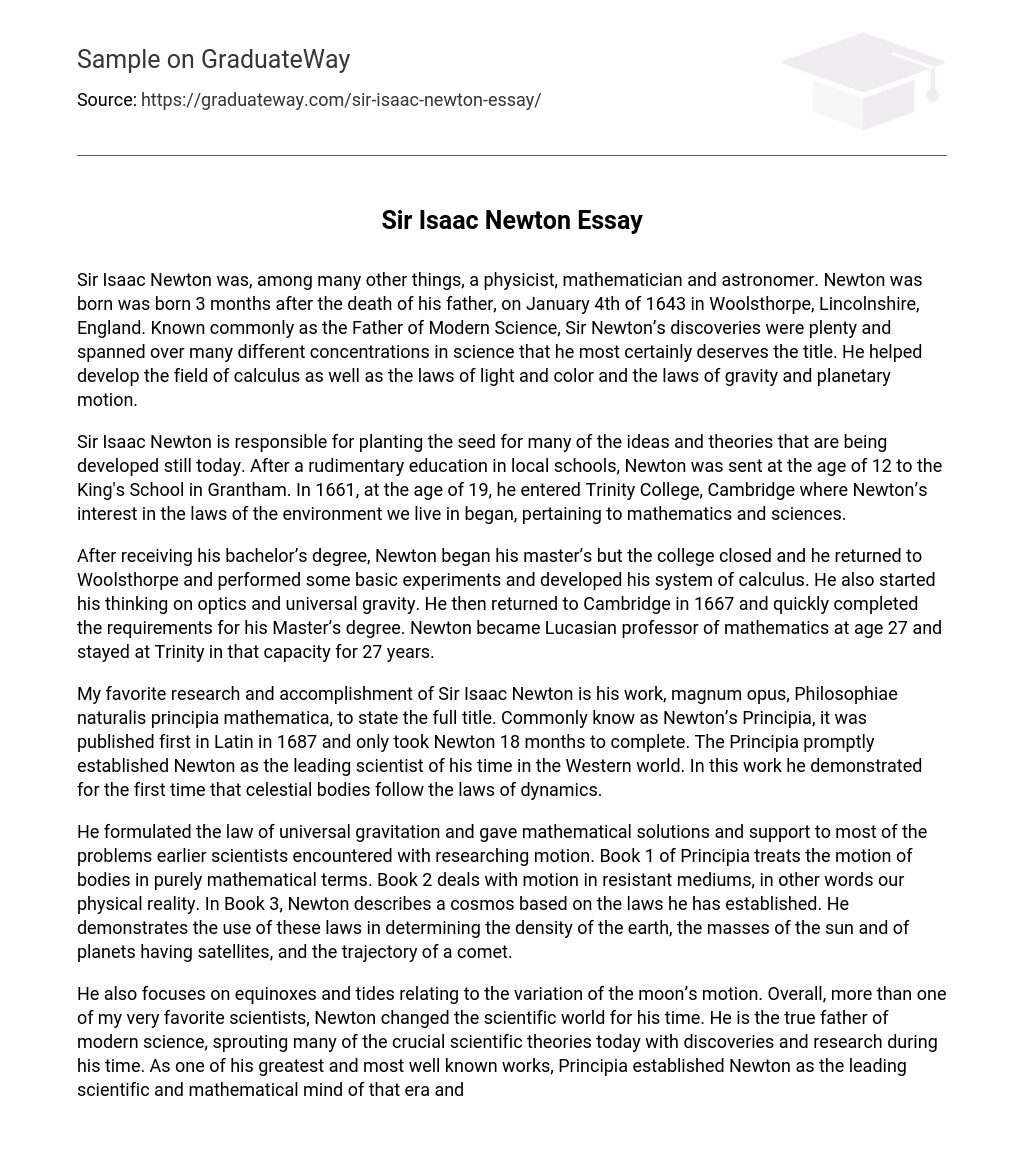Sir Isaac Newton, born on January 4th, 1643 in Woolsthorpe, Lincolnshire, England, was a physicist, mathematician, and astronomer. Despite being born three months after his father’s death, Newton earned the title of Father of Modern Science due to his significant contributions across various scientific disciplines. These encompassed calculus, the laws of light and color, as well as the laws governing gravity and planetary motion. Henceforth, Sir Newton’s achievements in these domains substantiate his bestowed honor.
Sir Isaac Newton sparked numerous ideas and theories that are still being pursued today. He received a basic education in local schools before attending the King’s School in Grantham at the age of 12. At 19, in 1661, Newton enrolled at Trinity College, Cambridge. It was during his time there that his fascination with the laws governing our environment, particularly in mathematics and sciences, took root.
After obtaining his bachelor’s degree, Newton commenced his master’s degree. However, due to the closure of the college, he had to go back to Woolsthorpe. During his time there, he conducted some fundamental experiments and devised his calculus system. Additionally, he initiated his reflections on optics and the concept of universal gravity. Subsequently, Newton went back to Cambridge in 1667 and efficiently fulfilled the necessary tasks for his Master’s degree. At the age of 27, Newton assumed the role of Lucasian professor of mathematics and held this position at Trinity for a period of 27 years.
My favorite research and accomplishment of Sir Isaac Newton is his work, magnum opus, Philosophiae naturalis principia mathematica, to state the full title. Commonly know as Newton’s Principia, it was published first in Latin in 1687 and only took Newton 18 months to complete. The Principia promptly established Newton as the leading scientist of his time in the Western world. In this work he demonstrated for the first time that celestial bodies follow the laws of dynamics.
Sir Isaac Newton developed a mathematical framework for the law of universal gravitation and successfully tackled many obstacles that previous scientists had encountered while studying motion. The first book in his work Principia emphasizes the mathematical aspects of motion, whereas the second book delves into motion within physical mediums. In the third book, Newton introduces his laws and applies them to explain numerous phenomena in the universe, such as determining the earth’s density, calculating the masses of celestial bodies through satellites, and plotting comet trajectories.
Newton’s main focus was on the motion of the moon and its relationship to equinoxes and tides. His contributions had a significant impact on the scientific community of his time, which is why he is one of my favorite scientists. He is widely considered to be the ultimate pioneer of modern science since many of today’s fundamental scientific theories can be traced back to his groundbreaking discoveries and research. Principia, one of Newton’s most famous works, further solidified his reputation as a leading intellect in both scientific and mathematical fields during that era. The principles and mathematical concepts introduced in this book are still used and taught by scientists today.





